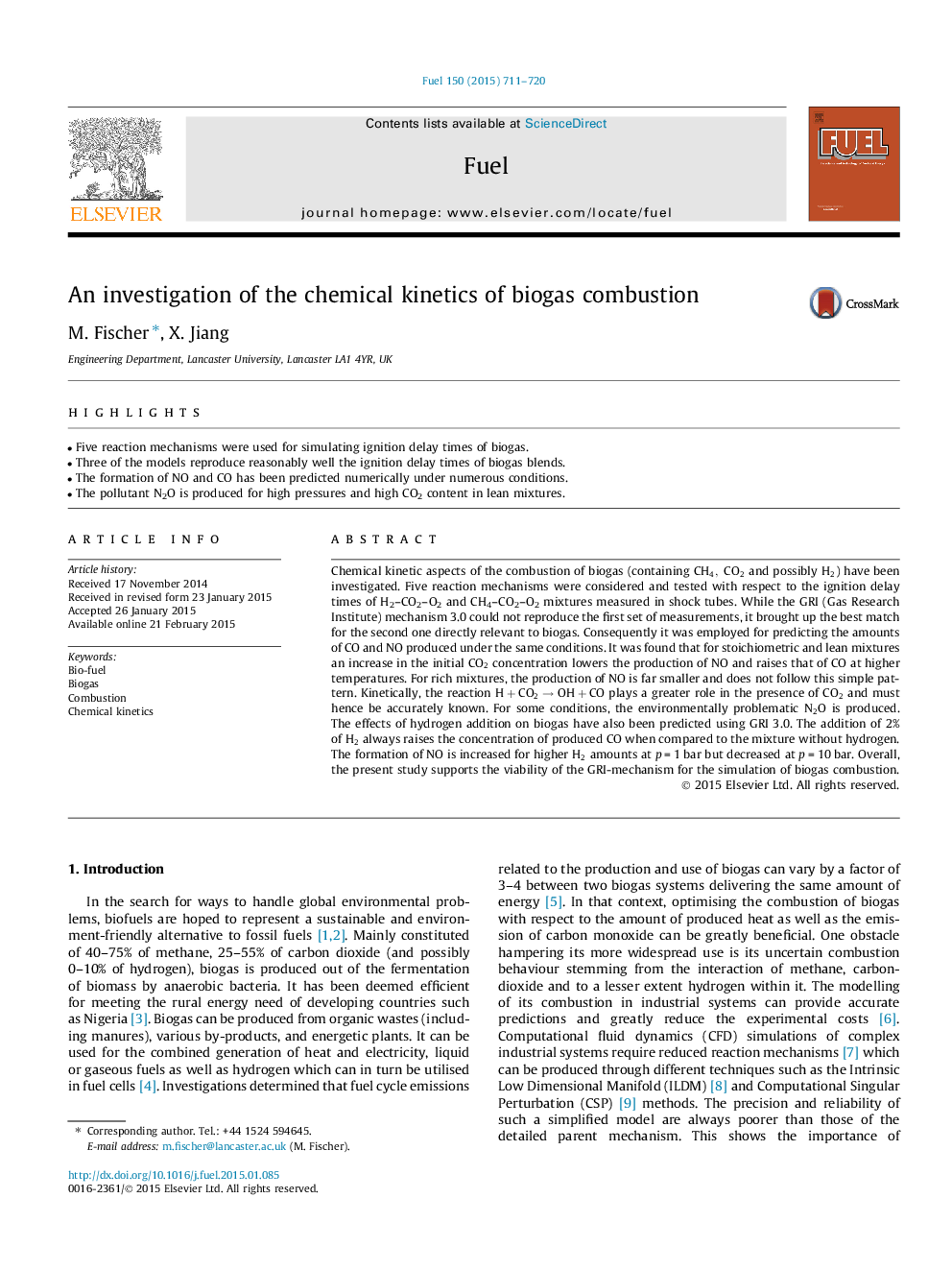| Article ID | Journal | Published Year | Pages | File Type |
|---|---|---|---|---|
| 205760 | Fuel | 2015 | 10 Pages |
•Five reaction mechanisms were used for simulating ignition delay times of biogas.•Three of the models reproduce reasonably well the ignition delay times of biogas blends.•The formation of NO and CO has been predicted numerically under numerous conditions.•The pollutant N2O is produced for high pressures and high CO2 content in lean mixtures.
Chemical kinetic aspects of the combustion of biogas (containing CH4,CO2 and possibly H2H2) have been investigated. Five reaction mechanisms were considered and tested with respect to the ignition delay times of H2–CO2–O2 and CH4–CO2–O2 mixtures measured in shock tubes. While the GRI (Gas Research Institute) mechanism 3.0 could not reproduce the first set of measurements, it brought up the best match for the second one directly relevant to biogas. Consequently it was employed for predicting the amounts of CO and NO produced under the same conditions. It was found that for stoichiometric and lean mixtures an increase in the initial CO2CO2 concentration lowers the production of NO and raises that of CO at higher temperatures. For rich mixtures, the production of NO is far smaller and does not follow this simple pattern. Kinetically, the reaction H+CO2→OH+COH+CO2→OH+CO plays a greater role in the presence of CO2CO2 and must hence be accurately known. For some conditions, the environmentally problematic N2ON2O is produced. The effects of hydrogen addition on biogas have also been predicted using GRI 3.0. The addition of 2% of H2H2 always raises the concentration of produced CO when compared to the mixture without hydrogen. The formation of NO is increased for higher H2H2 amounts at p = 1 bar but decreased at p = 10 bar. Overall, the present study supports the viability of the GRI-mechanism for the simulation of biogas combustion.
